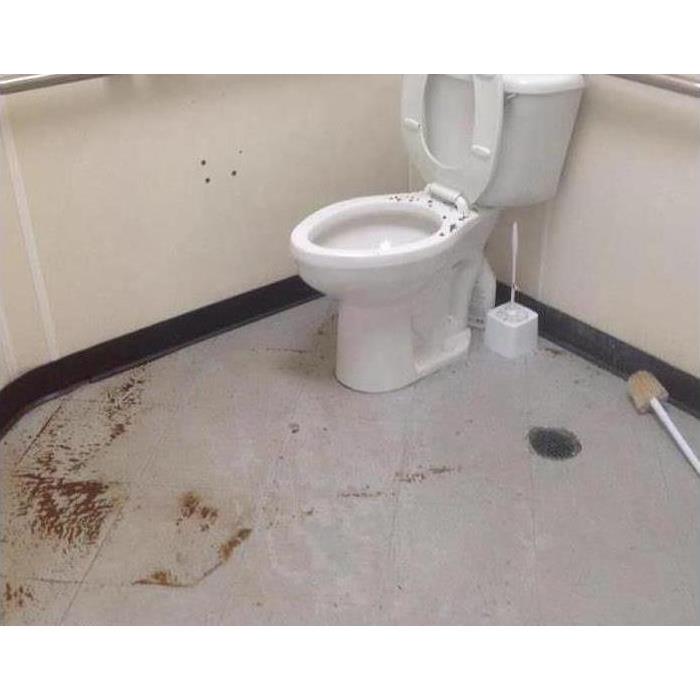Sewage Back Up Tips
9/10/2023 (Permalink)
Water damage in your home is devastating, especially cleaning up areas of your home after flooding and sewer damage. Water from sewer system backups should be considered very dangerous. The water is grossly unsanitary and may contain bacteria and viruses that could cause serious illness. Special training and equipment are necessary to safely clean this type of contamination.
If you ever face a sewage backup in your bathroom, there are a few things that are helpful to know to speed proper cleanup and ensure a safe and sanitary home for your family.
- Call for Help - If you suspect you have damaged sewer lines, call your sewage company to schedule an inspection. To protect your home from future mold or rot issues after a toilet overflow, call flood damage remediation experts. Only with the help of professional water removal specialists can you rest assured that floodwater has not crept into places you cannot see to wreak havoc.
- Dry the Area - Though you may be tempted to sanitize your bathroom immediately after a toilet overflows, you should not do so before you start drying out the affected area. Whether you are dealing with a flooded toilet or an entire flooded basement, the first thing you should do is utilize heavy duty vacuums, drainage systems and fans to remove all the water.
- Sanitize - After drying the area, sanitize it as best you can. Floodwater resulting from sewer damage can be toxic, so be thorough in your cleaning processes. Once the area is dry from the first round of sanitizer, you should plan to disinfect it one more time.
- Dehumidify - The presence of excess water in a bathroom often welcomes lingering humidity, which only encourages mold growth in spaces affected by sewer water. During the process of drying, sanitizing, and restoring, you should be sure that a dehumidifier is always running.





 24/7 Emergency Service
24/7 Emergency Service
